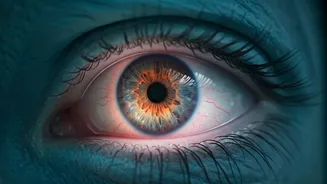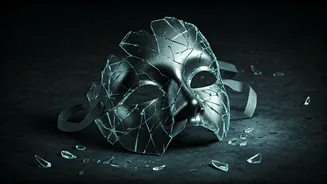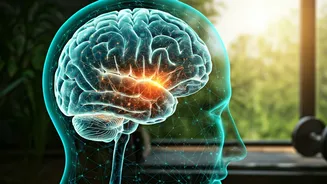Fear of Peanut Butter
Arachibutyrophobia is the fear of peanut butter sticking to the roof of the mouth. This phobia, while seemingly comical, can be quite distressing for those
who experience it. It's often linked to a fear of choking or suffocation. Individuals with this phobia might avoid eating peanut butter or take extreme caution when consuming it. This fear showcases the complex ways anxiety can manifest, highlighting the variety of unusual fears humans can develop. It underlines how seemingly harmless foods can become sources of significant distress because of a combination of physical sensations and psychological associations. Consequently, this phobia can lead to food avoidance and social awkwardness.
Fear of Mirrors
Eisoptrophobia, or the fear of mirrors, can be profoundly isolating. Sufferers may avoid mirrors altogether, limiting their ability to groom or check their appearance. This phobia isn't just about vanity; it's a deep-seated fear linked to reflections and the perception of the self. Some individuals with eisoptrophobia may fear what they see in the mirror—often a distorted image or a perception of something lurking behind them. The underlying causes vary from concerns about appearance to broader existential fears. The impact on everyday life is notable, as it involves avoiding any reflective surface, affecting social interactions and self-care routines. The intensity of this phobia can range from mild discomfort to severe anxiety and panic.
Fear of Balloons
Globophobia, the fear of balloons, is often triggered by the sight or sound of balloons. Many individuals fear the popping sound associated with balloons, leading to intense anxiety and avoidance. This fear could stem from an association with sudden loud noises or a general fear of unexpected events. Children and adults alike can experience globophobia, and it may impact participation in celebrations or events where balloons are present. The avoidance behavior can extend to anything related to balloons, like balloon decorations or even images of balloons. The psychological impact can include panic attacks, a sense of being trapped, and a significant disruption in social and recreational activities. This phobia underscores how seemingly innocuous items can trigger strong emotional responses.
Fear of Colors
Chromophobia involves a fear of specific colors. People with this phobia may experience anxiety when exposed to their trigger color, which can vary from person to person. This fear isn't necessarily about the color itself but the feelings associated with it. Cultural factors, personal experiences, and even associations with negative events can lead to chromophobia. The avoidance behaviors include staying away from environments with the trigger colors, limiting wardrobe choices, and even avoiding specific foods. The impact of chromophobia depends on the trigger color and how frequently it's encountered. It can significantly affect daily life, leading to limitations in work, travel, and social interactions.
Fear of the Number 13
Triskaidekaphobia is the fear of the number 13, a common superstition often seen in architecture, hotels, and everyday life. This phobia is linked to cultural beliefs and folklore surrounding the perceived bad luck associated with the number. The origins are often rooted in historical events and religious beliefs. People with triskaidekaphobia might avoid situations where the number 13 is present, like avoiding rooms numbered 13 or not booking flights on the 13th. The severity can vary, from minor discomfort to elaborate avoidance rituals. This fear underscores how numbers and symbols can be imbued with significant psychological weight, influencing behavior and decision-making.
Fear of Being Alone
Autophobia, or the fear of being alone, is a pervasive fear that significantly impacts social interactions and self-reliance. This phobia stems from a fear of abandonment or a deeper fear of one's own thoughts and feelings when alone. Individuals with autophobia often seek constant companionship and may experience intense anxiety when separated from others. The severity varies, but it often involves clinging behaviors, reluctance to leave the house, and a strong dependence on others for emotional support. This phobia is often linked to underlying issues of self-esteem or past experiences with loneliness or neglect. It illustrates how social needs and emotional well-being are intertwined with mental health.
Fear of Teeth
Odontophobia, the fear of teeth, covers a spectrum of anxieties relating to dental procedures or the condition of teeth. Some may fear the dentist, while others are anxious about their own teeth falling out. The fear often stems from childhood experiences, pain, or the feeling of vulnerability. People with odontophobia might delay or avoid dental care, leading to potential oral health problems. The impact is significant, as it can hinder the maintenance of good oral hygiene and result in painful dental issues. This phobia highlights the connection between physical sensations, past experiences, and emotional responses, emphasizing how even essential health care practices can trigger deep-seated anxieties.












